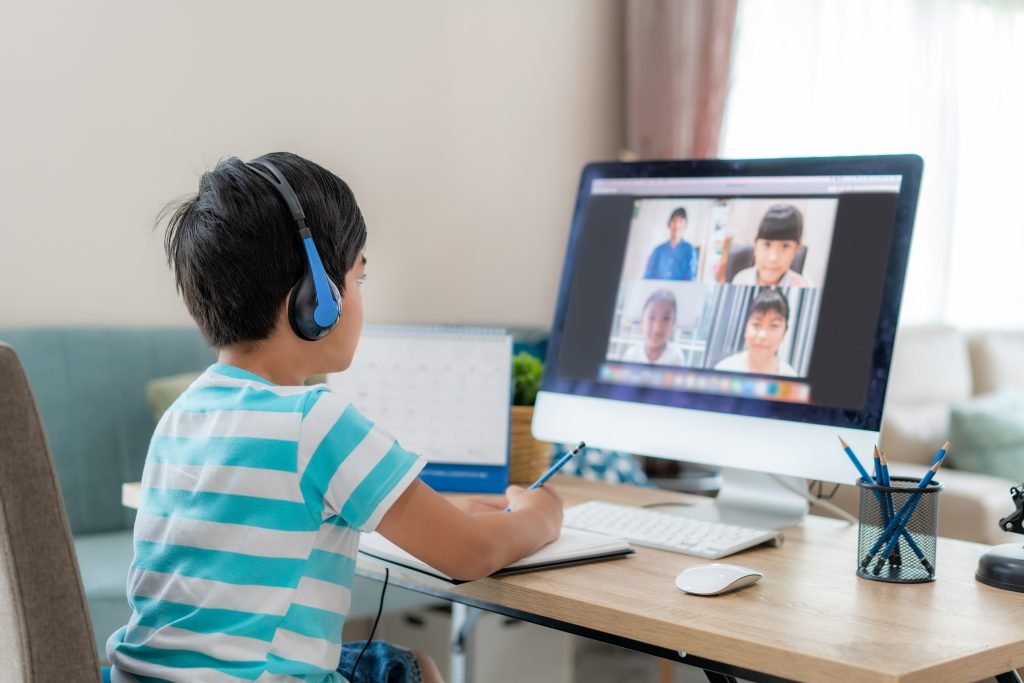COVID-19 emerged as a global threat to the world affecting almost all sectors including education. The world not only lost irretrievable lives thanks to this pandemic, but also owing to this pandemic, the world got into a situation of complete halt in 2020 and hasn’t yet been able to recover from it. COVID-19 had a profound impact on the Indian Education System too. The sudden arise of a global level pandemic and the resulting nationwide lockdown led to a lot of complexities in the Education system. The effects of pandemic have disrupted the traditional classroom modes of teaching and learning, this affected the students, teachers and also the educational institutions of India. Among the countless changes faced by the students and teachers in this pandemic have been:
Shift to Online Learning:

Thanks to the nationwide lockdown following the pandemic, we saw a complete closure of all the schools, colleges and universities throughout the country. To continue education of students, institutions as a result sought towards the online learning platforms. Institutions encouraged these online platforms creating virtual classrooms for effective learning. Although this method of online teaching has made learning available to students at their homes in the time of lockdown and deliver education remotely; it has not yet been able to do it effectively. As there are many students living in remote areas with limited access to technology and network connectivity, they have been facing difficulties in learning efficiently through online modes. Also, there are many students who cannot afford the required technological devices to effectively continue learning online, they too have faced challenges in this pandemic.
Learning Loss and Disruptions:
The sudden pandemic and then the extended closure of educational institutions and the alternative shift to online learning have led to several significant changes resulting in learning losses and disruptions. The sudden change in teaching method and the digital divide among students have impacted the effectiveness of education delivery specially in a country like India. Online teaching was something that was completely new for the students as well as the teachers. Many students faced difficulty in adjusting to the online method of learning, many students could not even get access to the online methods of learning. Also, there were many students who were not studying properly in the online classes. As per a survey held by Road Scholarz, only 8% of students were studying regularly, and 37% were not studying at all. This resulted in unequal access to learning and hence reduced and/or ineffective learning outcomes. The teachers too, who never had the experience of teaching online, had to be first trained in the methods of learning through virtual classrooms. Also, in the initial period of lockdown, we saw the institutions in a period of stillness, in this period no progress was made in the field of education.
System of Evaluation:
The pandemic and the resulting lockdown led to a significant disruption in the conduction of examinations and evaluations of students. At first, we saw the Board exams, university exams and competitive exams like NEET, JEE, etc. either getting cancelled or postponed. Later we saw the institutions and the Government laying emphasis on some alternative assessment options such as online exams and assessment on the basis of internal evaluation. But this method proved to be inefficient as a whole. We saw many students taking a careless approach to the online exams as the exams were conducted in Open Book Test format, they paid less and less attention to studies and more on copy pasting answers from their textbooks. We also saw evaluation negligence from the end of teachers in the internal assessments. This led to several disruptions in examination system.
Mental Health Challenges:

The pandemic and the associated changes coming with it in the education system, had a significant impact on the mental health and well-being of the students and teachers. The isolation, stress and uncertainty caused by the pandemic and the lockdown; led to the increase in the level of anxiety, depression and other mental health issues among the members of the education system. This further reduced the learning output during the pandemic.
Inequities and Accessibility to Education:
The pandemic has increased the already prevalent inequities in the education system. The students from marginalized communities, belonging to remote and village areas or those belonging to economically weaker backgrounds, have faced greater challenges in education. They faced problem in learning due to the lack of necessary infrastructure, devices and connectivity. Many students living in remote areas taking university education in cities had to remain there or migrate back to the cities from home during the lockdown. This widened the learning divide among students, leading to disparities in learning processes and outcomes.
Challenges for Teachers:
The teachers too faced a numerous challenge during the period of pandemic. The biggest of them being the challenge to adapt to the digital learning environment. Apart from this they also had to develop their own skills in handling digital platforms and devices. And also, they had to make the virtual classes as engaging as the real ones. This shift to online learning came as a great burden to the teachers, as they had to completely change their natural way of teaching.
Economic Impact:
The economic repercussions of the pandemic affected every sector of the society. The education system was not untouched from it too. Due to several problems like stagnancy in work, loss of jobs etc. financial conditions of many families deteriorated. As a result, many parents felt it difficult to afford the educational expenses of their children. The expenses like school fee, learning materials were themselves expensive, and online learning even added the cost of internet access and digital devices to it. This put up an educational strain on the educational sector, particularly for the private sector.
Conclusion:
In conclusion, the COVID-19 pandemic led to a lot of disruptions and challenges to the Indian Education System. First, the shift to online learning, learning loss, modifications in evaluation system, economic impacts etc. are among some of the notable effects. Still, the education system continues to thrive and develop new ways of countering these difficulties. Although they may seem inefficient, but the steps taken for efficient continuation of education has ensured that education is provided to students even in this difficult time.


1 comment
अच्छी लेख है शिक्षाप्रद l